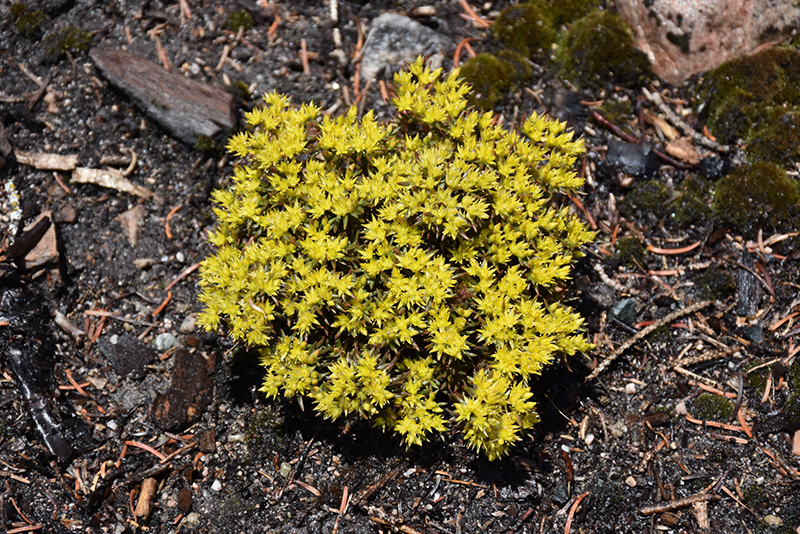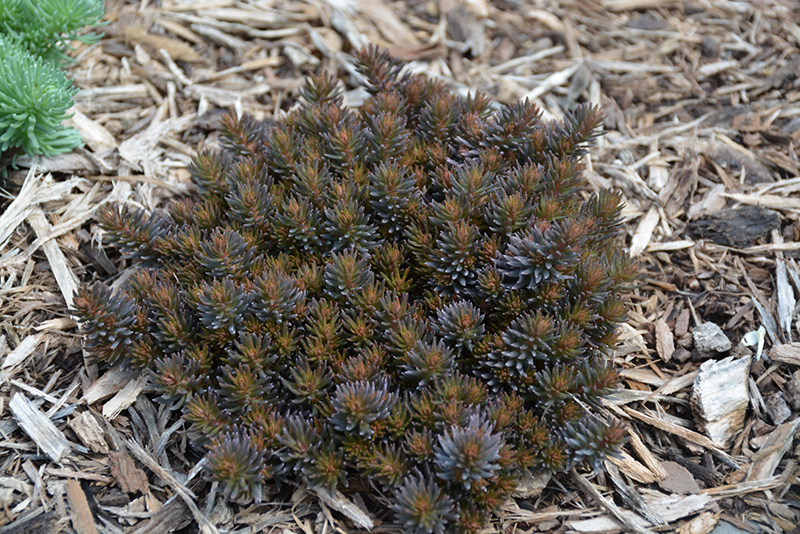>> Home
Chocolate Ball Stonecrop
Sedum hakonense 'Chocolate Ball'
Height: 8 inches
Spacing: 12 inches
Sunlight:
![]()
![]()
Hardiness Zone: 4
Description:
An exceptional perennial featuring rich chocolaty-brown foliage that turns dazzling red in fall; showy yellow flowers emerge in summer; very showy in a mass planting; prefers poor soils and dry conditions; an excellent rock garden or container accent
Ornamental Features
Chocolate Ball Stonecrop features showy clusters of yellow star-shaped flowers at the ends of the stems from mid summer to early fall. Its attractive large succulent needle-like leaves emerge coppery-bronze in spring, turning dark brown in color with showy grayish green variegation and tinges of white. As an added bonus, the foliage turns a gorgeous red in the fall. The coppery-bronze stems are very colorful and add to the overall interest of the plant.
Landscape Attributes
Chocolate Ball Stonecrop is a dense herbaceous perennial with a mounded form. Its relatively coarse texture can be used to stand it apart from other garden plants with finer foliage.
This is a relatively low maintenance plant, and is best cleaned up in early spring before it resumes active growth for the season. It is a good choice for attracting butterflies to your yard, but is not particularly attractive to deer who tend to leave it alone in favor of tastier treats. It has no significant negative characteristics.
Chocolate Ball Stonecrop is recommended for the following landscape applications;
- Mass Planting
- Rock/Alpine Gardens
- Border Edging
- General Garden Use
- Groundcover
- Container Planting
Planting & Growing
Chocolate Ball Stonecrop will grow to be about 8 inches tall at maturity, with a spread of 15 inches. When grown in masses or used as a bedding plant, individual plants should be spaced approximately 12 inches apart. It grows at a fast rate, and under ideal conditions can be expected to live for approximately 15 years. As an herbaceous perennial, this plant will usually die back to the crown each winter, and will regrow from the base each spring. Be careful not to disturb the crown in late winter when it may not be readily seen!
This plant does best in full sun to partial shade. It is very adaptable to both dry and moist growing conditions, but will not tolerate any standing water. It is considered to be drought-tolerant, and thus makes an ideal choice for a low-water garden or xeriscape application. It is not particular as to soil pH, but grows best in poor soils, and is able to handle environmental salt. It is highly tolerant of urban pollution and will even thrive in inner city environments. This is a selected variety of a species not originally from North America. It can be propagated by division; however, as a cultivated variety, be aware that it may be subject to certain restrictions or prohibitions on propagation.
Chocolate Ball Stonecrop is a fine choice for the garden, but it is also a good selection for planting in outdoor pots and containers. It is often used as a 'filler' in the 'spiller-thriller-filler' container combination, providing a mass of flowers and foliage against which the thriller plants stand out. Note that when growing plants in outdoor containers and baskets, they may require more frequent waterings than they would in the yard or garden.


